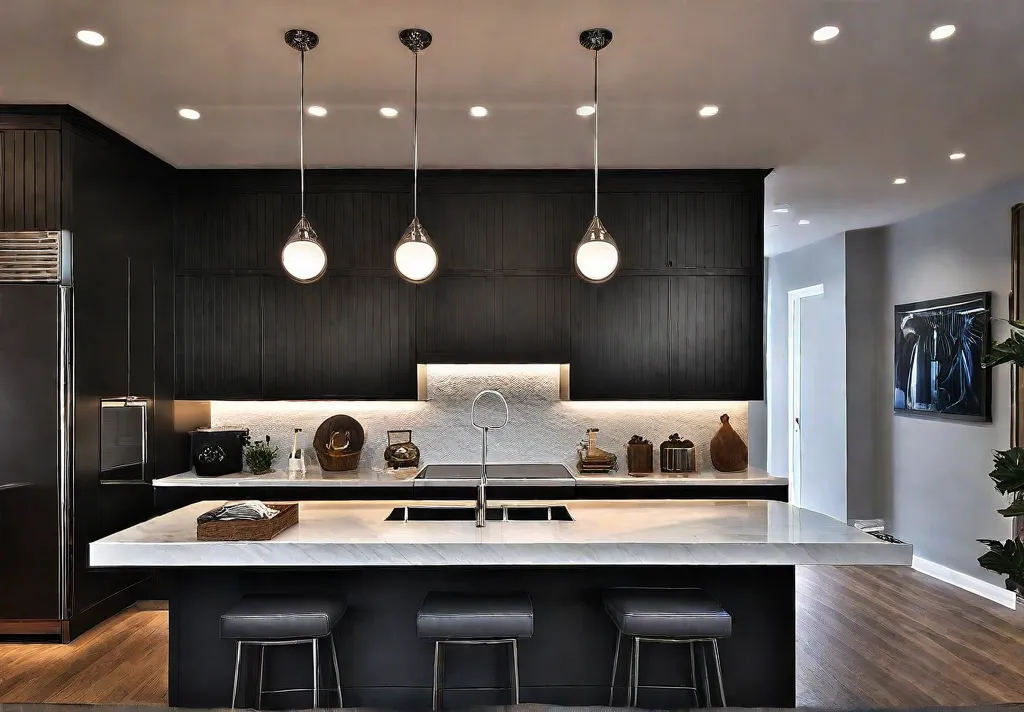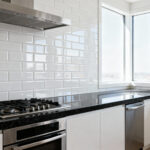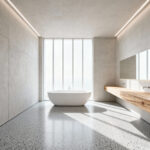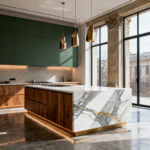Have you ever walked into a kitchen and felt like something was just… off? Maybe the lighting was too harsh, or there were too many shadows in the corners. Proper lighting can make all the difference in a kitchen, transforming it from a functional space into a warm, inviting room you enjoy spending time in.
As a home decorator, I’ve seen firsthand how the right kitchen light fixtures can enhance a space’s overall look and feel. Choosing the perfect lighting is crucial whether you’re renovating your kitchen or just looking to give it a fresh new look. In this comprehensive guide, we’ll explore the different types of kitchen light fixtures, discuss the key factors to consider when selecting them and dive into the principles of lighting design that can help you create a truly stunning kitchen.
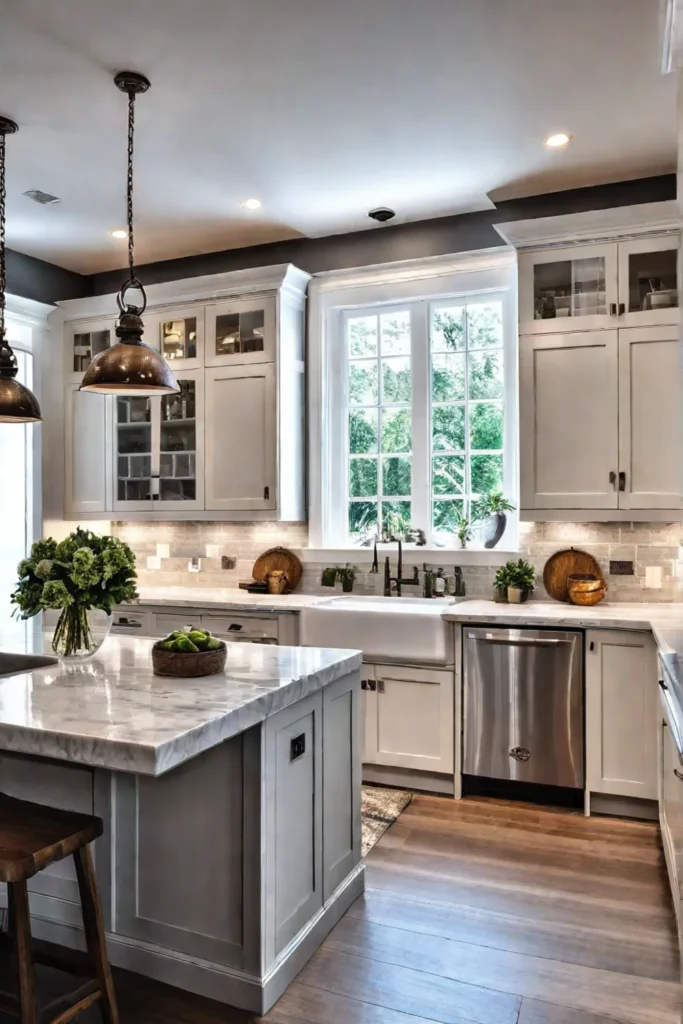
Types of Kitchen Light Fixtures
Let’s start by taking a closer look at the various kitchen light fixtures you can choose from. Each option has unique benefits and considerations, from the classic pendant light to the sleek and modern recessed lighting.
Pendant lights are popular for kitchens, as they can illuminate specific areas, like an island or a dining nook. These suspended fixtures come in various styles, from rustic and industrial to modern and minimalist. They’re a great way to add a touch of personality to your kitchen.
Next, we have recessed lighting, perfect for providing a more even ambient glow throughout the space. These flush-mounted fixtures blend seamlessly into the ceiling, creating a clean, uncluttered look. They’re an excellent option for kitchens with limited wall or ceiling space.

Under-cabinet lighting is another essential component of a well-designed kitchen. These task-oriented fixtures illuminate your countertops and work surfaces, making it easier to see what you’re doing when cooking or prepping meals.
And let’s not forget about chandeliers! These larger, more decorative fixtures can add a touch of elegance to a kitchen, especially in a more formal dining area or over a large island.
Finally, we have task lighting, focused illumination highlighting specific areas, like the stove, sink, or food preparation zones. This type of lighting is crucial for ensuring safety and functionality in the kitchen.

Choosing the Right Kitchen Light Fixtures
Now that you’re familiar with the different kitchen light fixtures, let’s talk about choosing the right ones for your space.
The first thing to consider is the size of your kitchen. Pendant lights, for example, should be proportionate to the size of your island or dining area. Recessed lighting, on the other hand, should be spaced out evenly to provide even coverage. Measuring your kitchen and considering the desired visual impact will help you select the appropriate size and placement of your light fixtures.
Next, consider your kitchen’s overall style. Are you going for a modern, minimalist look or a more traditional, farmhouse-inspired feel? The style of your light fixtures should complement the rest of your kitchen’s design. For a modern kitchen, sleek, geometric pendant lights or recessed lighting might be the way to go. An ornate chandelier or vintage-inspired sconces could be the perfect fit for a more traditional space.
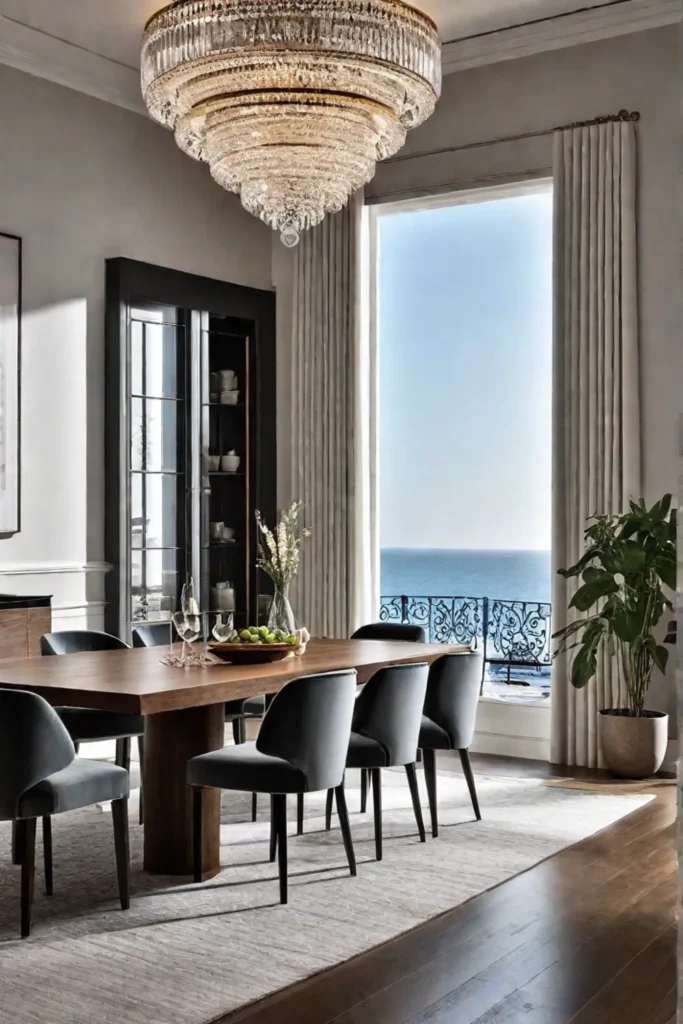
And let’s not forget about energy efficiency. These days, LED bulbs are the way to go, as they use up to 75% less energy than traditional incandescent bulbs and last much longer. Choosing energy-efficient light fixtures can save you money on your electricity bills and reduce your carbon footprint.
Lighting Design Principles for the Kitchen
Now that we’ve covered the different types of kitchen light fixtures and how to choose the right ones, let’s explore lighting design principles. These principles can help you create a well-lit, visually appealing, functional, and inviting kitchen.
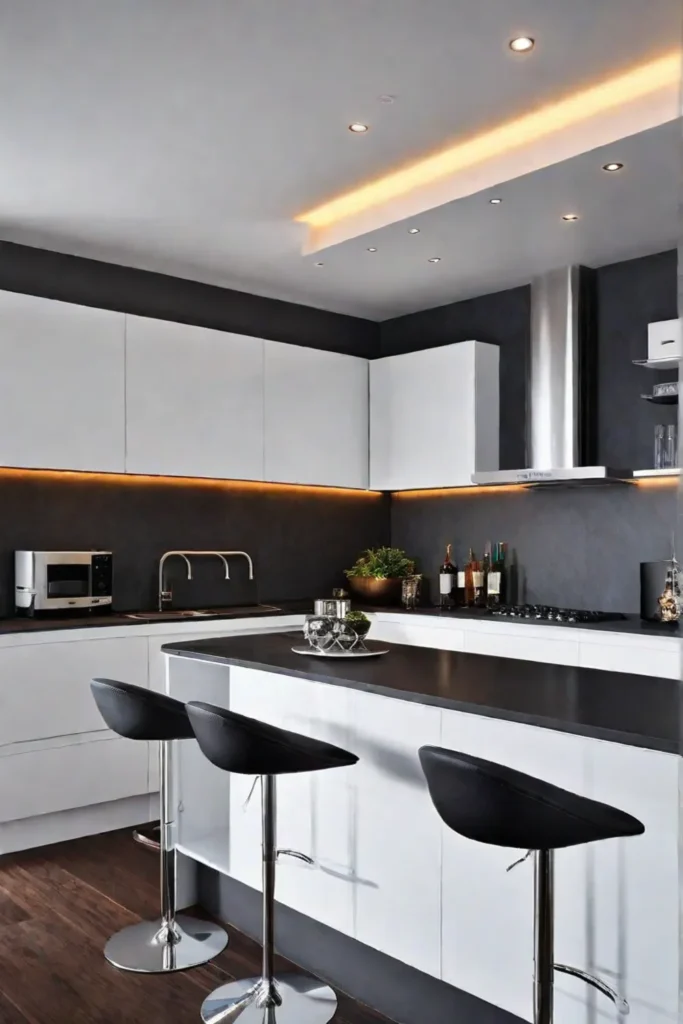
One key principle is layering lighting. This involves combining different types of lighting, such as ambient, task, and accent lighting, to create a balanced and functional scheme. For example, you might use recessed lighting for general illumination, under-cabinet lighting for task lighting, and pendant lights or wall sconces for accent lighting.
Another important principle is identifying and addressing the specific lighting needs of different zones within your kitchen. The cooking zone, the dining area, and the work surfaces all have unique lighting requirements. By addressing these needs, you can ensure that every area of your kitchen is properly lit and that you can comfortably and safely perform all your kitchen tasks.
Lighting controls, such as dimmers and motion sensors, can also play a crucial role in enhancing the functionality and energy efficiency of your kitchen lighting. With these controls, you can adjust the light levels to suit your needs, whether cooking a meal or entertaining guests.
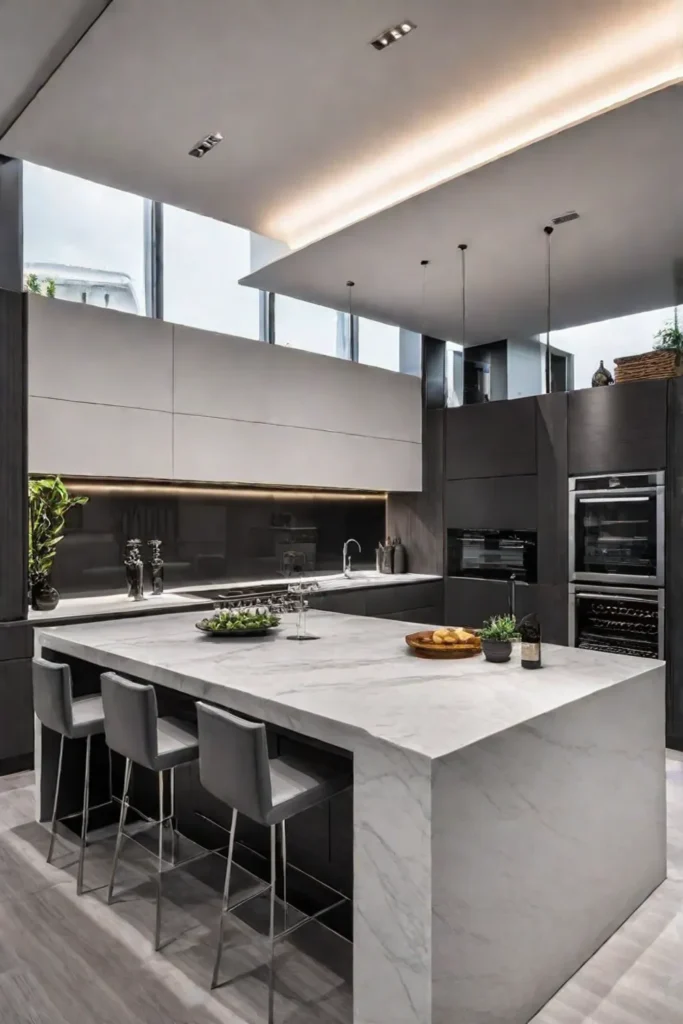
Finally, don’t forget about the aesthetic impact of your kitchen light fixtures. Choosing fixtures that complement the overall design of your kitchen can make a big difference in the overall look and feel of the space.
Trends and Innovations in Kitchen Light Fixtures
As with any design element, kitchen light fixtures are constantly evolving. New materials, technologies, and aesthetic trends are shaping the industry. Let’s take a look at some of the latest developments.
One of the biggest trends in kitchen lighting is using natural, sustainable materials. Fixtures made from reclaimed wood, recycled glass, and even natural stone are becoming increasingly popular as homeowners seek to create a more eco-friendly and personalized look in their kitchens.

Advancements in lighting technology are also transforming the way we light our kitchens. LED bulbs are now more affordable and energy-efficient than ever, and smart lighting systems allow you to control your fixtures with your smartphone or voice commands. These innovations not only improve the functionality of your kitchen lighting but also contribute to its overall aesthetic.
When it comes to design trends, we’re seeing a lot of diversity. Minimalist, industrial-inspired fixtures are popular in modern kitchens, while farmhouse-style pendants and chandeliers are making a big splash in more traditional spaces. The key is to find the right balance between form and function, choosing fixtures that look great and provide the necessary illumination.
Conclusion
Choosing the right kitchen light fixtures can be daunting, but with the right information and a little creativity, you can transform your kitchen into a warm, inviting, and highly functional space.
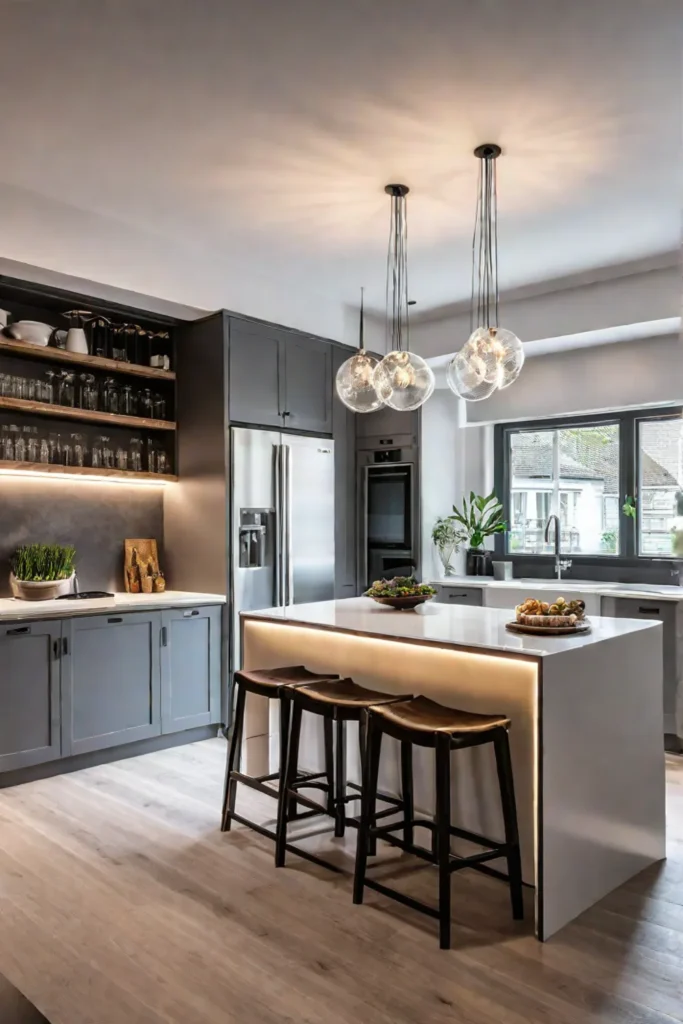
Remember, the key is to consider the different types of kitchen light fixtures, the factors that go into selecting them, and the lighting design principles. By layering your lighting, addressing each zone’s specific needs, and incorporating the latest trends and innovations, you can create a kitchen that looks stunning and makes your cooking and entertaining experiences a true delight.
So, what are you waiting for? Start exploring the world of kitchen light fixtures, and get ready to take your kitchen to the next level!
